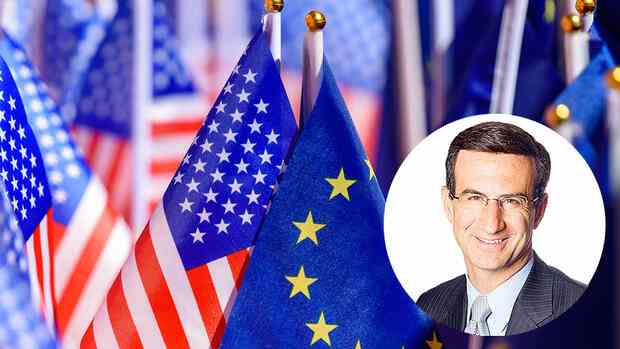Europe and the US have a historic opportunity to form a “super bloc”. An alliance that stands together against the Russian invasion of Ukraine, significantly reduces dependence on China for trade and fights global climate change. In connection with Europe, there is often talk of the “Brussels Effect”, which sets standards for countries and companies outside the EU. Such an EU-US super bloc would have a much stronger “Brussels effect”.
The power of this idea can be seen in Ukraine. Europe and the US have stood by Ukraine in an unprecedented manner and together isolated Moscow. Cooperation on reducing dependence on China is equally encouraging, although admittedly there is still disagreement.
With regard to the energy transition, it seems to be more difficult to find a common path. This is precisely why the political decision-makers must massively intensify cooperation here. Otherwise there is a risk that this will undermine the enormous potential of a superblock.
Europe should recognize the relatively modest impact of IRA regulations
The climate catastrophe must be avoided, there is a global consensus on this. Despite this, the US and the EU are at odds over energy policy. The biggest dissent at the moment is the Inflation Reduction Act (IRA).
The world should actually cheer for the IRA. It is estimated that by 2030 it will reduce annual US greenhouse gas emissions by one billion tons. Emissions will fall 42 percent below 2005 levels by 2035. Without the law, it would be just 27 percent.
However, Europe should not have been excluded from the conditions for granting subsidies. But the provisions are now in law, and the split in Congress makes it almost impossible to change them.
It would ease things if the Europeans recognized the relatively moderate influence of the IRA rules while the US made concessions wherever possible.
For example, according to the IRA, funding for batteries in electric vehicles requires that 40 percent of the minerals used in a battery come from the United States or a partner country with free trade agreements. However, there is no such agreement between the EU and the USA. For this reason, minerals mined or processed in the EU do not count towards subsidizing electric car batteries.
The US Treasury Department has now outlined a way to change that. While negotiating a comprehensive free trade agreement would be too complex, the idea is to sign a tight deal that resolves the subsidy issue.
>> Also read: The USA is becoming a pioneer when it comes to hydrogen
In addition, the EU should tackle its own subsidy program with comparable framework conditions in order to eliminate competition concerns. In the debate, France and Germany should signal to the other 25 EU members that the subsidies will also benefit them.
The transatlantic agreement on green steel could serve as a model for other trade issues
The next focal point will be the so-called Carbon Border Adjustment Mechanism (CBAM), the EU tax on carbon emissions for imports from countries that do not have their own tax system. This also includes the USA, and it will remain so in the near future.
Imposing additional costs on US exports as revenge for the IRA may sound tempting from an EU perspective. But I think such a “tit for tat” is wrong.
The transatlantic agreement on green steel and aluminum gives reason for hope: steel causes eleven percent of global emissions. The US and EU have agreed to agree on a joint calculation of embedded emissions for CBAM tariffs. This would avoid the EU imposing tariffs on US steel exports.
This model could also be applied to other emission-intensive industries, including chemicals. A “climate club” that applies the scheme described for the steel and aluminum industry globally, i.e. establishes coordinated tariffs per sector, would be a promising approach for the super bloc and to lower the global emission curves.
The energy transition will not happen overnight. Carbon is too deeply rooted in our society for that. The fact that this is a long-term project only shows the need for a cohesive approach.
Now it has to be a matter of bridging small differences and not falling into arguments. It would be tragic if the potential of an EU-US super bloc failed to materialize, lost in the depths of the shared challenge of climate change.
The author:
Peter Orszag is Chief Executive Officer Financial Advisory at Lazard. Before entering the financial sector, he worked for the US government, including as Director of the Office of Management and Budget (OMB) in US President Barack Obama’s cabinet.
More: Partner or opponent? How the EU and the USA could converge on free trade
